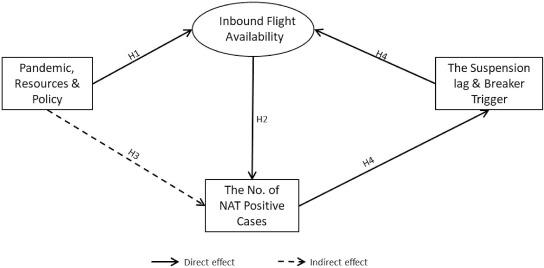The effect of aviation responses to the control of imported COVID-19 cases |
| |
| Affiliation: | City and Regional Planning, The Ohio State University, Columbus, OH, 43210, USA |
| |
| Abstract: | 
The outbreak of the COVID-19 pandemic has a lasting and unprecedented negative impact on the global aviation industry. While countries such as China have successfully curbed the domestic outbreak of the virus with various restrictive and preventive measures, the challenge of avoiding imported cases remains. More importantly, it is still unclear to what extent these implemented aviation emergency responses have effectively mitigated the transmission risk of the virus. This paper provides an empirical assessment of aviation responses to the control of imported COVID-19 cases, with a focus on the following three strategies: the “circuit breaker” policy, the “negative Nucleic Acid testing (NAT)”, and the “double negative tests” requirement. Non-recursive structural equation models (SEM) with latent variables were applied to detailed international flight data and individual epidemic survey data of Guangzhou, China, between May 1 and November 30, 2020. The results show that the “double negative tests” measure has a positive effect on eliminating the number of SARS-CoV-2 carriers, while the effects of single “circuit breaker” and its co-intervention with “negative NAT” are conterproductive. This study provides important implications to civil aviation agencies in regard to medium and long-term risk control of imported cases. Specifically, although the circuit breaker mechanism was designed to target on the risk control of imported COVID-19 cases, it may be more effective to carefully maintain a timely and reliable pre-boarding screening and testing to curb the number of imported cases. |
| |
| Keywords: | COVID-19 Aviation response Circuit breaker Double negative tests SEM |
| 本文献已被 ScienceDirect 等数据库收录! |
|

